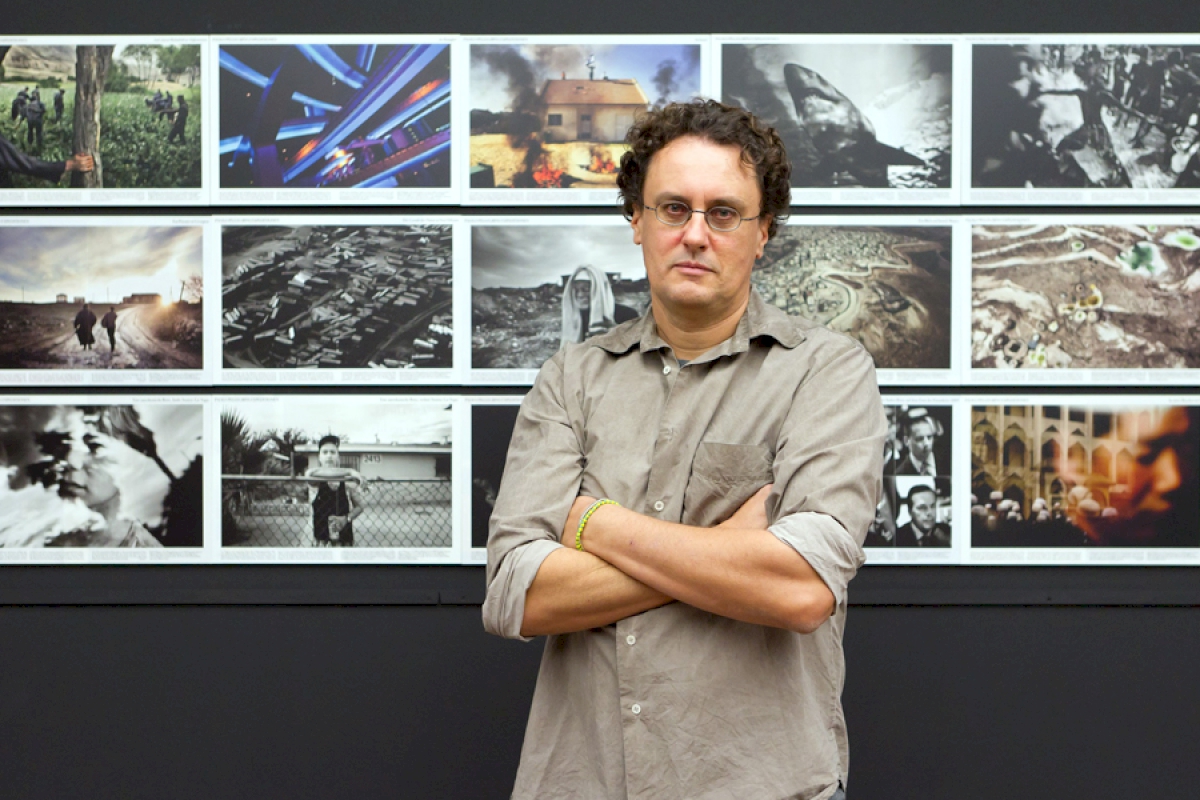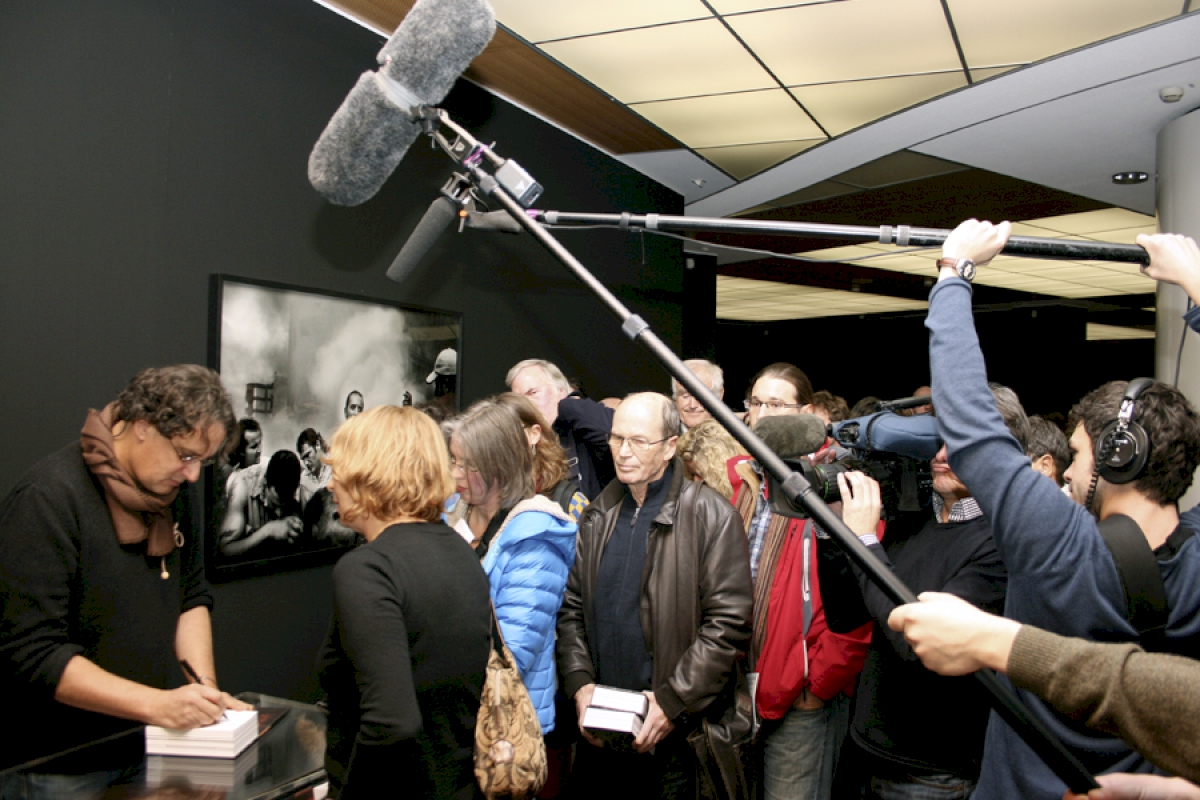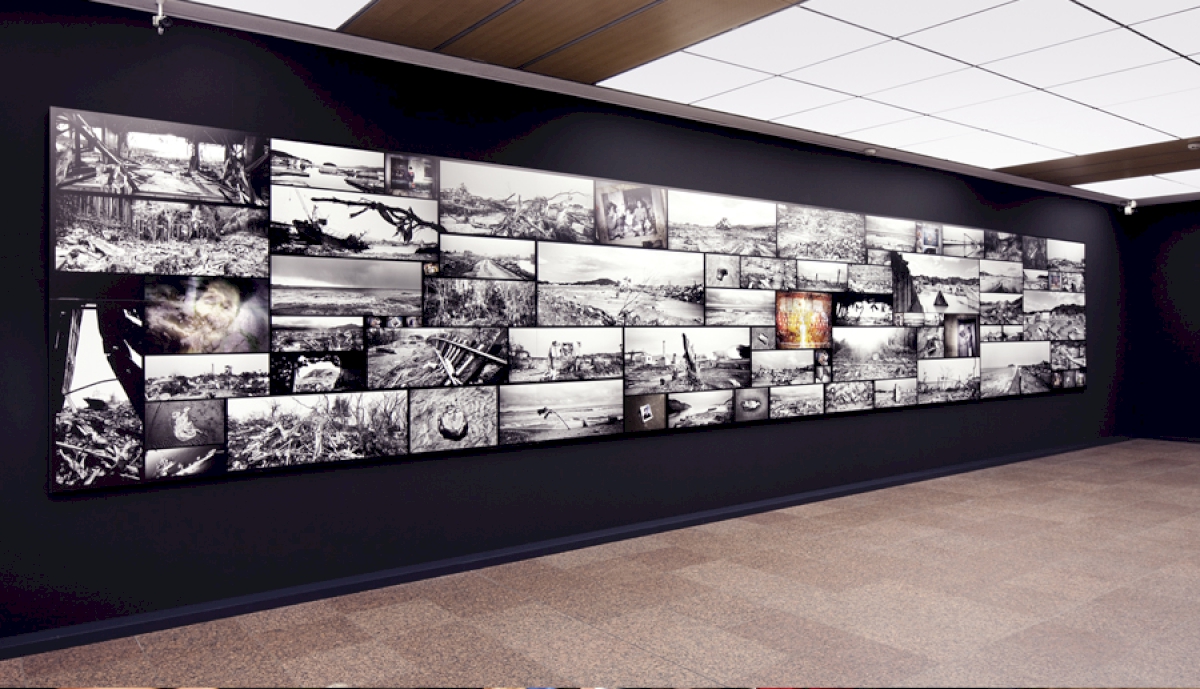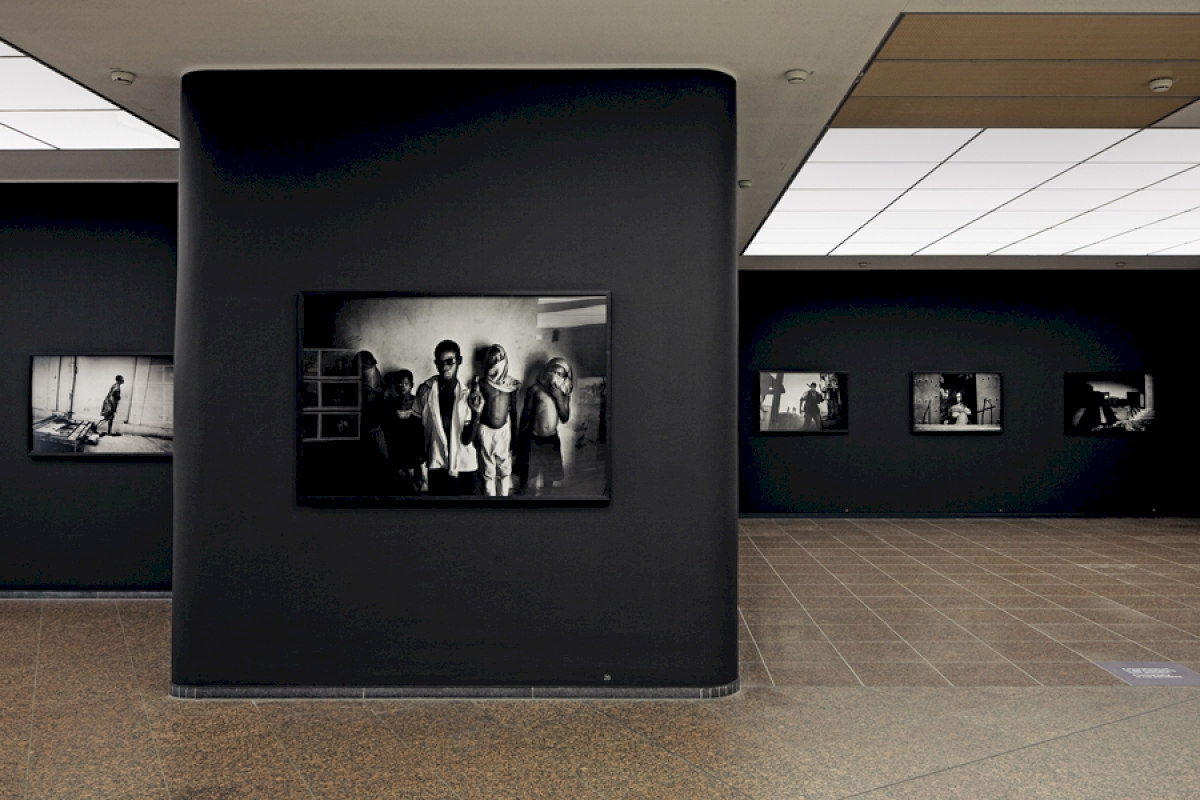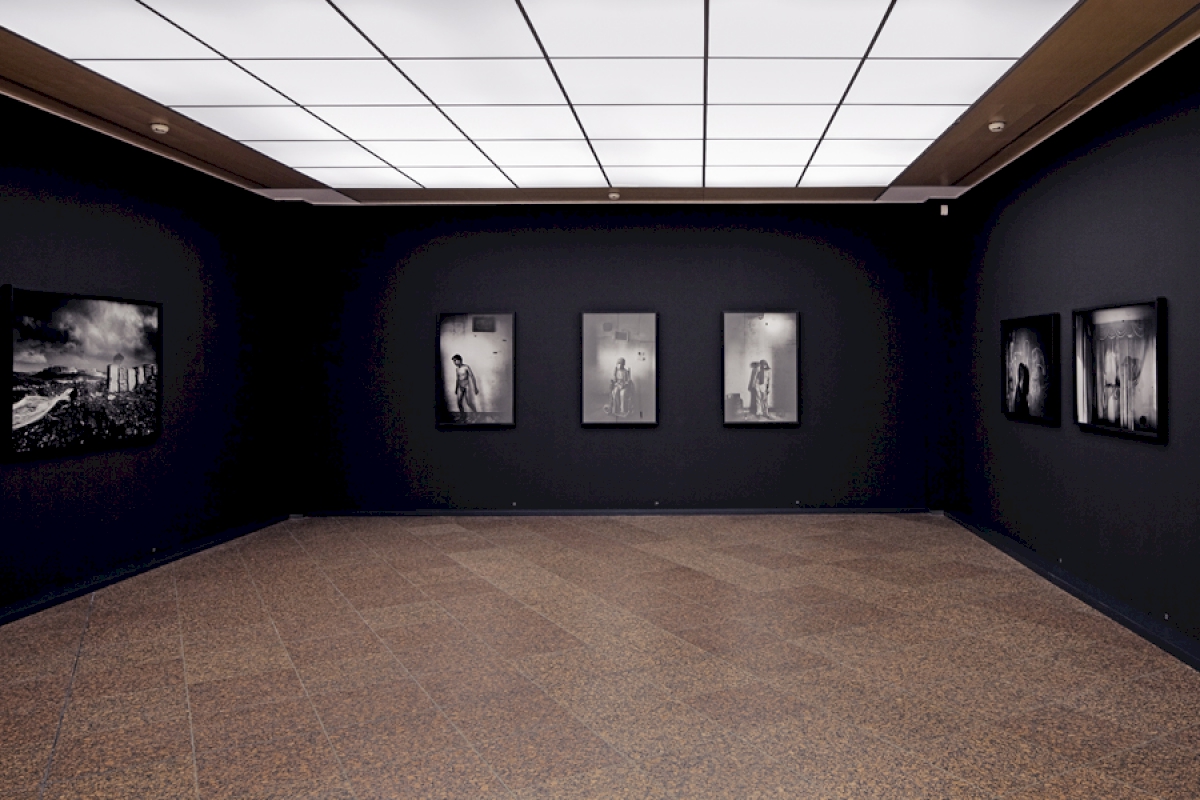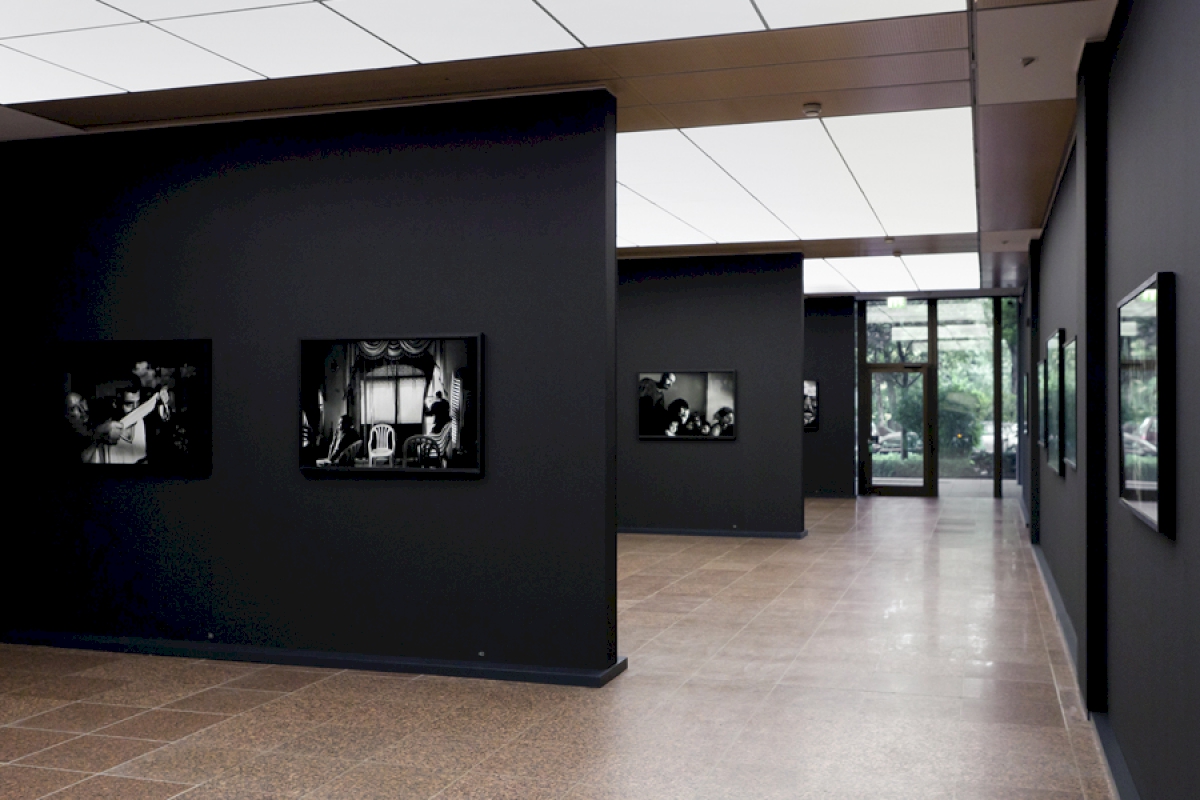Paolo Pellegrin. Retrospektive
What makes a photograph newsworthy? What makes a photograph sensational? We learn a lot about the world we don’t live in through the media. We see an increasing number of images from global hotspots, wars, and catastrophes. People risk their lives demonstrating for their freedom and appealing to the international community. Images alone do not contribute to an understanding of a harsh reality that so differs from our own situation, however. Without a credible report or commentary, all one sees are conglomerations of unknown faces and places.
Multiple award-winning Magnum photographer Paolo Pellegrin (born in Rome in 1964 and a Magnum member since 2005) views himself as a witness with a witness’s responsibility. He seeks direct contact to the people in troubled areas, in appalling poverty, and in unpredictable situations. His photo stories appear regularly in New York Times Magazine and Newsweek. Since 2011 he has been a columnist for ZEITmagazin, where each week he presents one of his powerful and oftimes disturbing photographs. Pellegrin shows respect for the many who are nameless. The striking thing about his photographs is their unusual intimacy. Within the framework of an exhibition, his monumental black and white photographs have an especially strong impact. For the first time, the Kunstfoyer der Versicherungskammer Bayern is showing a retrospective of his documentary photography from the last ten years, including some of his very latest works, such as the 12-meter wide photo-installation concerning the catastrophe in Fukushima and the demonstrations in Cairo’s Tahrir Square.
The Magnum agency
The legendary Magnum agency was founded in 1947 by photographers for photographers – from men who had made important photographic records during the turbulent thirties and in war zones. Even after the World War ended, photojournalism and the high-circulation magazines prospered. Despite all the differences in personality and background among Magnum members, there were still some decisive common denominators: the Magnum ethic, as formulated by Henri Cartier-Bresson, “to testify to the scars of the world,” and the enforcement of copyright: to make photographs in accordance with their own ideas, to sell them, and to place them in the proper context; to try to lead the market, instead of just following it.
Feature stories
Afghanistan, Sudan, Albania, Iraq, Lebanon, Romania, Kosovo, the Vatican, the Gaza Strip, Haiti, Indonesia, Angola, Ethiopia, Liberia, Egypt, Japan, Israel, Iran, Libya, Cuba, Syria, Jordan, Mali, Algeria
Magnum in Motion
Motion pictures by Paolo Pellegrin will be shown during the exhibition:
Iranian Memoir, The Downward Spiral, Lebanon, Guantanamo, Gaza Evacuation, Haiti
Catalog
A richly illustrated catalog accompanies the exhibition. It includes an interview with Paolo Pellegrin conducted by Isabel Siben. Design: Yolanda Cuomo. Editor: Isabel Siben. Self-published
Curator
Isabel Siben

